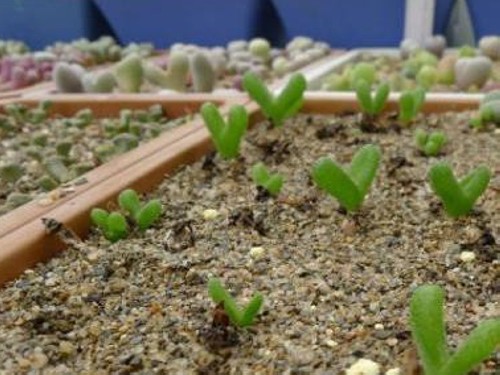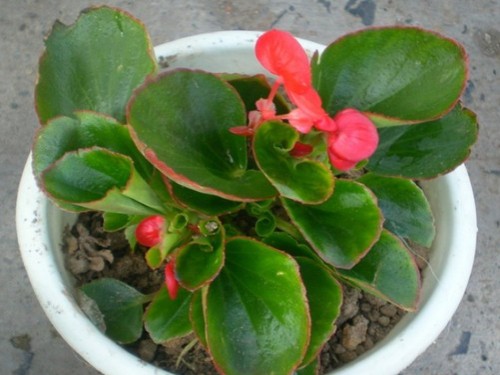The Propagation method of Zijiao Flower
Purple Jiao flower, belongs to Amaryllidaceae perennial herb, bulbous flower, plant height 30-50 cm, with cylindrical bulbs, clustered into plants, its appearance is different from Chinese leek (Chinese leek is generally white flower, this flower is purple), other characteristics are similar to Chinese leek, and the whole plant has a strong leek flavor and can be eaten with Chinese leek, stir-fry, cold, soup and so on. Therefore, it is also known as leek, leek, terminal Cymes with purple and pink flowers.

Purple flowers with green leaves, beautiful flowers, fleshy petals and long flowering period are rare flowers in summer; they are suitable for mid-landscape, or the land is planted in forest margins or lawns. Is also a good cut flower. The main methods of reproduction are sowing propagation, scale propagation, bulb propagation and bulb propagation.
1. Sowing and reproduction
Sowing belongs to sexual reproduction, which is mainly used in breeding. Seeds are harvested in autumn and stored for sowing in the following spring. It germinated about 20-30 days after sowing. The sun should be shaded properly in the seedling stage. At the beginning of autumn, small bulbs have been formed in the underground part, which can be dug up and planted. Due to different species, some seedlings bloom for 3 years, while others need to be cultivated for many years before they can blossom. Therefore, this method is not suitable for families.
2. Scale propagation
That is, scale cuttings are used to produce bulbs, and high-quality purple flowers with large stems, positive color and intact disease and insect pests are selected as seeds. First, the base of the bulb was cut off with a bamboo knife to separate the scales, and then planted in the seedbed of sunny sandy soil from September to October. The ditch was 10 cm deep, and the scales were buried in the ditch with a row spacing of 30 cm wide and a plant spacing of 35 cm. Cover with 4 cm thick soil and press slightly after burying. In the following spring, the scales were taken out and used as reproductive scales for replanting. When planting, the scales can be concave, otherwise it is not easy to emerge.
3. Bulb propagation
It is also called bulblet propagation. The bulbs next to the mother bulbs are harvested and preserved in September-October, and the stems are reproduced and stored mixed with wet sand. They are taken out and planted in the middle of April of the following year. The depth of planting is 10-15 cm, and they can sprout in 20-25 days. The larger bulbs can bloom in the same year, and the smaller ones can blossom for 2-3 years. There are also soilless seedlings, and the bulbs to be removed are placed in the wooden box of the greenhouse at a temperature of 18 ℃-20 ℃, so that small lily seedlings can grow in 3-4 months and can be planted in March-April the following year.
4. Bulblet propagation
There are small bulbs in the axils of leaves, which can be collected and planted in the nursery after the flowers have withered and before the buds fall off. A year later, small bulbs can be formed, leaf buds can grow, and they can bloom after 2-3 years. Sowing and propagation is also possible, but the seedlings cultivated by seed germination grow slowly and are not used for non-large-scale propagation. There are four propagation methods: sowing, bulblet division, scale cutting and split bud, and one of them can be chosen according to the need.
Time: 2019-06-10 Click:
- Prev

Cuttage method of Malus asiatica
Begonia is the most common and cultivated species of Begonia. Beautiful posture, delicate and bright leaves, flowers into clusters, open all the year round, and slightly with fragrance, for indoor and outdoor decoration of one of the main pot flowers. People apply it to flower bed arrangement, the effect is excellent. With the emergence of some relatively heat-tolerant varieties
- Next

Propagation and Seedling technique of lobular Privet
Lobular Ligustrum lucidum belongs to Oleaceae, Ligustrum lucidum, evergreen or semi-evergreen shrubs. Also known as small leaf holly, small ash tree. It is a hedge material in the garden, and can be used as the rootstock of sweet-scented osmanthus, cloves and other trees. Strong sex, cold tolerance; strong root tillering; resistance to pruning. It can be propagated by sowing, cutting and ramet, but mainly by sowing.
Related
- Fuxing push coffee new agricultural production and marketing class: lack of small-scale processing plants
- Jujube rice field leisure farm deep ploughing Yilan for five years to create a space for organic food and play
- Nongyu Farm-A trial of organic papaya for brave women with advanced technology
- Four points for attention in the prevention and control of diseases and insect pests of edible fungi
- How to add nutrient solution to Edible Fungi
- Is there any good way to control edible fungus mites?
- Open Inoculation Technology of Edible Fungi
- Is there any clever way to use fertilizer for edible fungus in winter?
- What agents are used to kill the pathogens of edible fungi in the mushroom shed?
- Rapid drying of Edible Fungi

